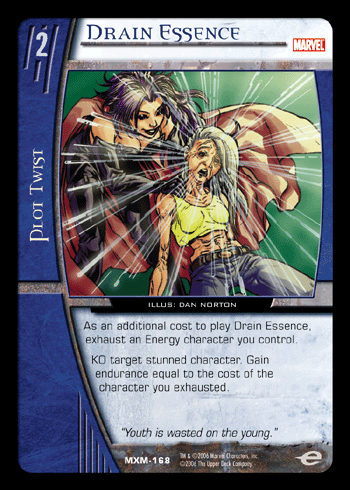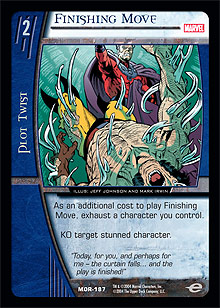Back in the day, Stan Lee was faced with a problem: The world was running out of heroes.
There could only be so many nuclear accidents, cosmic storms, bizarre chemicals, and radioactive spiders that could produce powerful heroes to keep the pages of Marvel’s latest comics safe. If comics were to keep their humanity, then heroes couldn’t all come from other planets where people are just inherently more “super.” Though technology remained as magical in sci-fi as magic was in fantasy, the quandary remained even when these two great elemental explanations for all things out of the ordinary were put into one comic book universe that was brave (or foolish) enough to allow even the most incredible to become commonplace.
There was an answer, though, and it was in equal parts smaller than the eye could see and larger than anyone could imagine.
Every human is in many respects his or her own perfect snowflake. We are all different and yet largely the same. We are made predominantly of water. If we are yellow, you probably shouldn’t eat us. When Marvel comics was faced with the problem of creating a new breed of superheroes, they took that thought and ran with it. The very thing that makes us the way we are is DNA. DNA creates RNA, which in turn creates proteins—the building blocks for life. Monkey about with DNA a little, and a small rose bush turns into a tyrannosaurus rex. Okay . . . that takes quite a lot of fiddling about. But on a less grandiose scale, Marvel would have us believe that through just small mutations in human DNA, a man can shoot lasers from his eyes or control the power of magnetism at a whim.
It was, and is, a beautiful solution. With the creation of mutants with “super” powers, a plethora of options in terms of heroes became easily accessible. Suddenly, there were so many heroes that there could be colossal teams of powered-up people, both good and bad. There were so many characters that the great comic book taboo, killing off a character, could be achieved with ease.
The X-Men were the poster children of this revolution, and it is fitting that the Children of the Atom are the headliners in the most mutant-heavy Vs. set ever. In the writing of this article, I found myself considering their name with some intrigue. Every human has the X chromosome, and to be born male and ultimately become a man, it is necessary to have a Y chromosome too. An XX man is, in fact, a woman. Are these mutants ex-men (and women) who have moved on from being human to something else, something better? Is there simply some X-factor that makes mutants so special? It would take quite a miraculous mutation to provide me with sufficient insight to answer these questions, so for now, I won’t worry. I have a preview to write, don’t you know.
My preview card is, on some levels, really quite straightforward. Its effect is a familiar one, but with a little added bonus. What really interests me is its cost. Take a look:

In the same way that people are all the same and yet different at the same time, there are elements of Drain Essence that are strikingly familiar and yet wholly new. I must confess that when I first set eyes on the card above, I let slip a small frown due in part to each of these facets.
 Finishing Move is a staple card in both Sealed Pack and Constructed. Being able to KO the appropriate one of your opponent’s characters at the right time can turn the tide of the game. On the face of things, Drain Essence is essentially the same card, but with the added benefit of some endurance gain. Traditionally, gaining endurance has been rather spurned by competitive Vs. players, as it is typically not as useful as anything that actually kills one’s opponent. In general, I would agree with such sentiments, though increasingly I do find that the faster decks win very very quickly and have less and less late game, so perhaps now might be the time to get high on life. When doing so is not at the expense of actively trying to win, I am pretty easily sold.
Finishing Move is a staple card in both Sealed Pack and Constructed. Being able to KO the appropriate one of your opponent’s characters at the right time can turn the tide of the game. On the face of things, Drain Essence is essentially the same card, but with the added benefit of some endurance gain. Traditionally, gaining endurance has been rather spurned by competitive Vs. players, as it is typically not as useful as anything that actually kills one’s opponent. In general, I would agree with such sentiments, though increasingly I do find that the faster decks win very very quickly and have less and less late game, so perhaps now might be the time to get high on life. When doing so is not at the expense of actively trying to win, I am pretty easily sold.
But what of this reference to an Energy character? Allow me to issue the following spoiler. There is no team in Vs. called Energy, and that is not going to change. Equally, you will not find a character in the set with the version Energy. No, in fact, Energy is a term relating to one of the types of Mutants in the X-Men set.
The X-Men set is, unsurprisingly, pretty rammed with Mutants. They’re everywhere. They come in three flavors—Physical, Mental, and Energy—and each of those traits reference the sort of power that the Mutant has. While someone like Professor X will likely have the Mental trait, and Wolverine the Physical, Magneto seems likely to be an Energy Mutant. These traits are so integral to the very being of the Mutant characters that they can’t just be “switched off” when the Mutant is stunned. To this end, a Mutant’s traits are detailed on the bottom of its image box rather than in the text box. That way, if a character is a Mutant, it will stay that way no matter how beaten up it might be.
So, it would seem that our new version of Finishing Move can only be used by Energy-wielding mutants. What does this mean for it in Constructed? Ultimately, we are going to have to wait and see how the whole set comes out before we can really say. For a change, this preview card seems to ask more questions than it answers. Could we see decks more focused on energetic Mutants than on any one team? How many Energy Mutants does one need to run before Drain Essence’s trickier cost is outweighed by some endurance gain? Is gaining endurance and stalling more viable than ever?
I don’t have the answers. I am not, as has already been proven, a Mental Mutant. But they are coming.
Have fun at the Sneak Preview,
Tim “Proud Not to Have Included a Single Bad X Joke in This Entire Article” Xilloughby
timwilloughby@hotmail.com
Tomorrow's Preview: